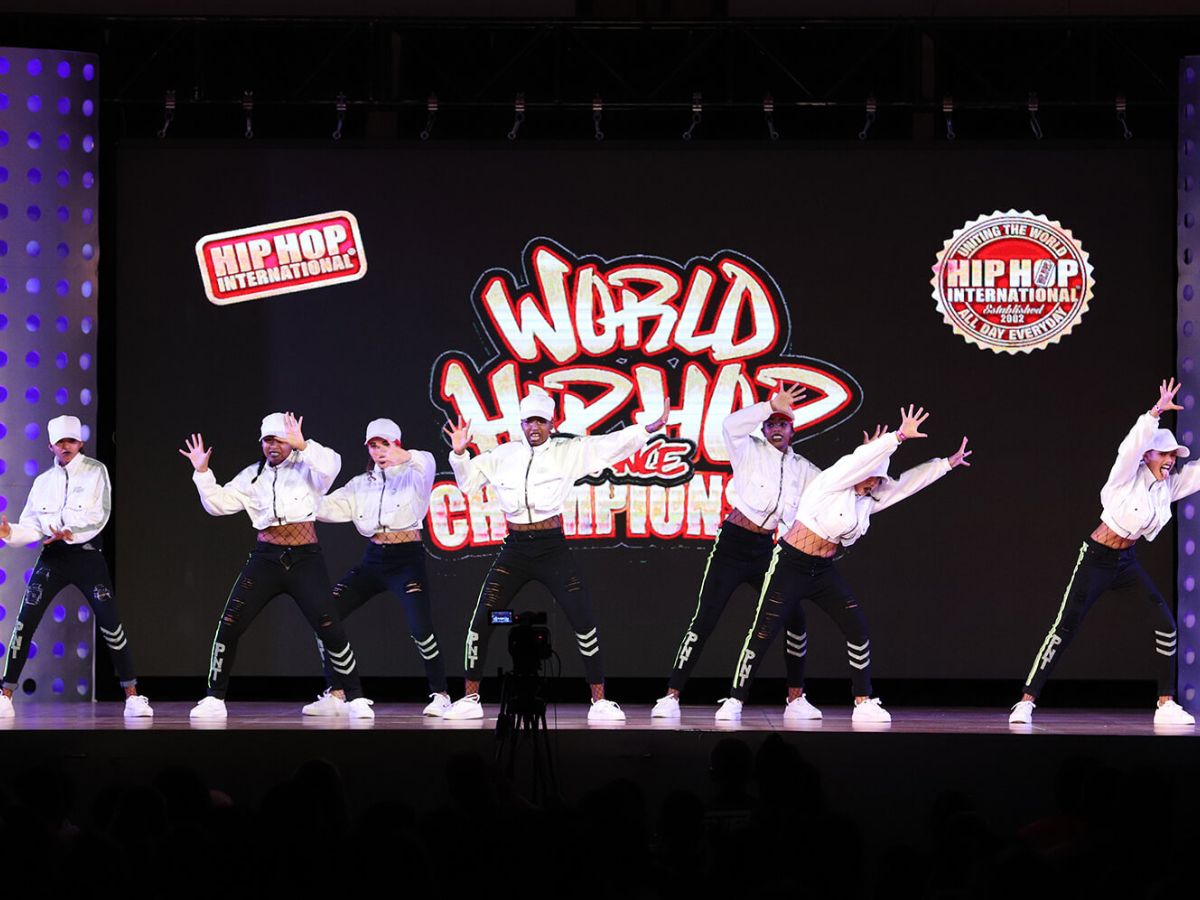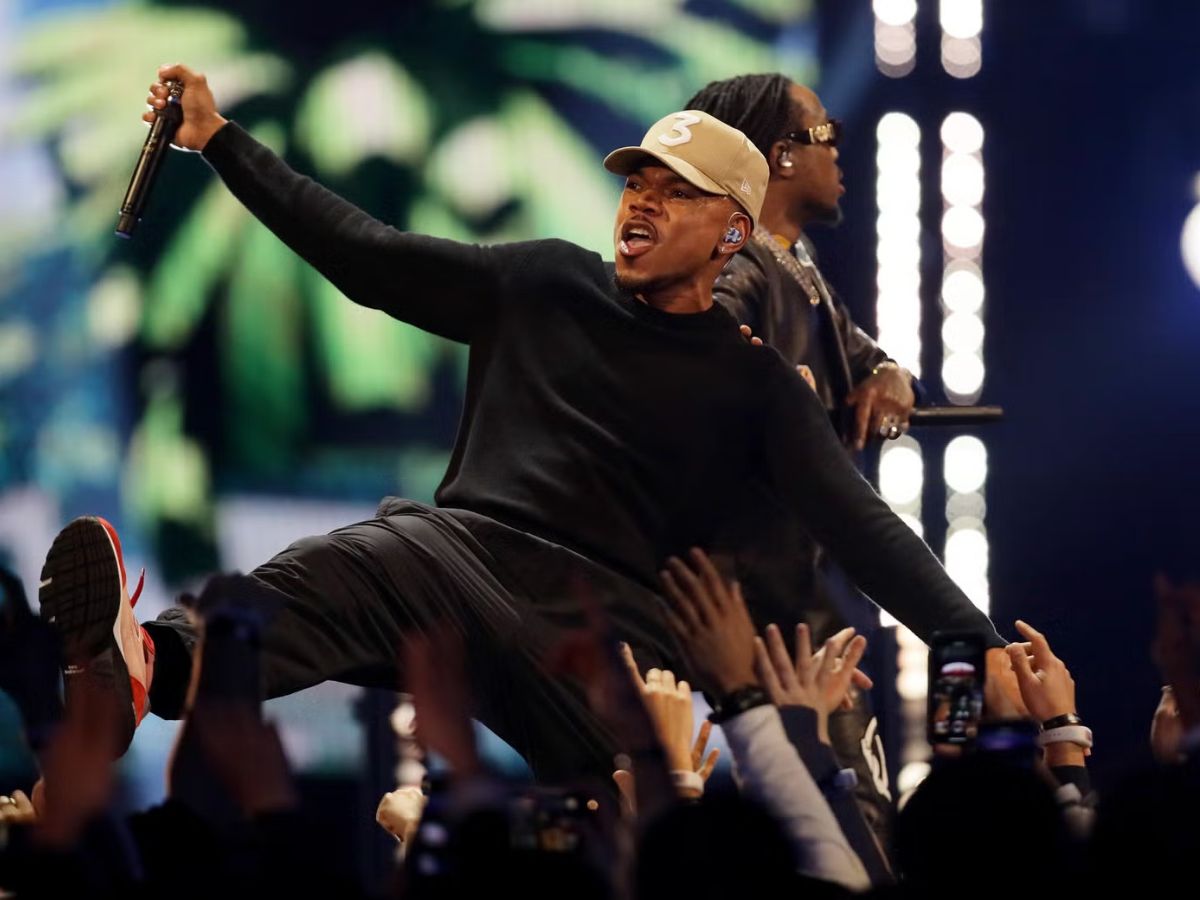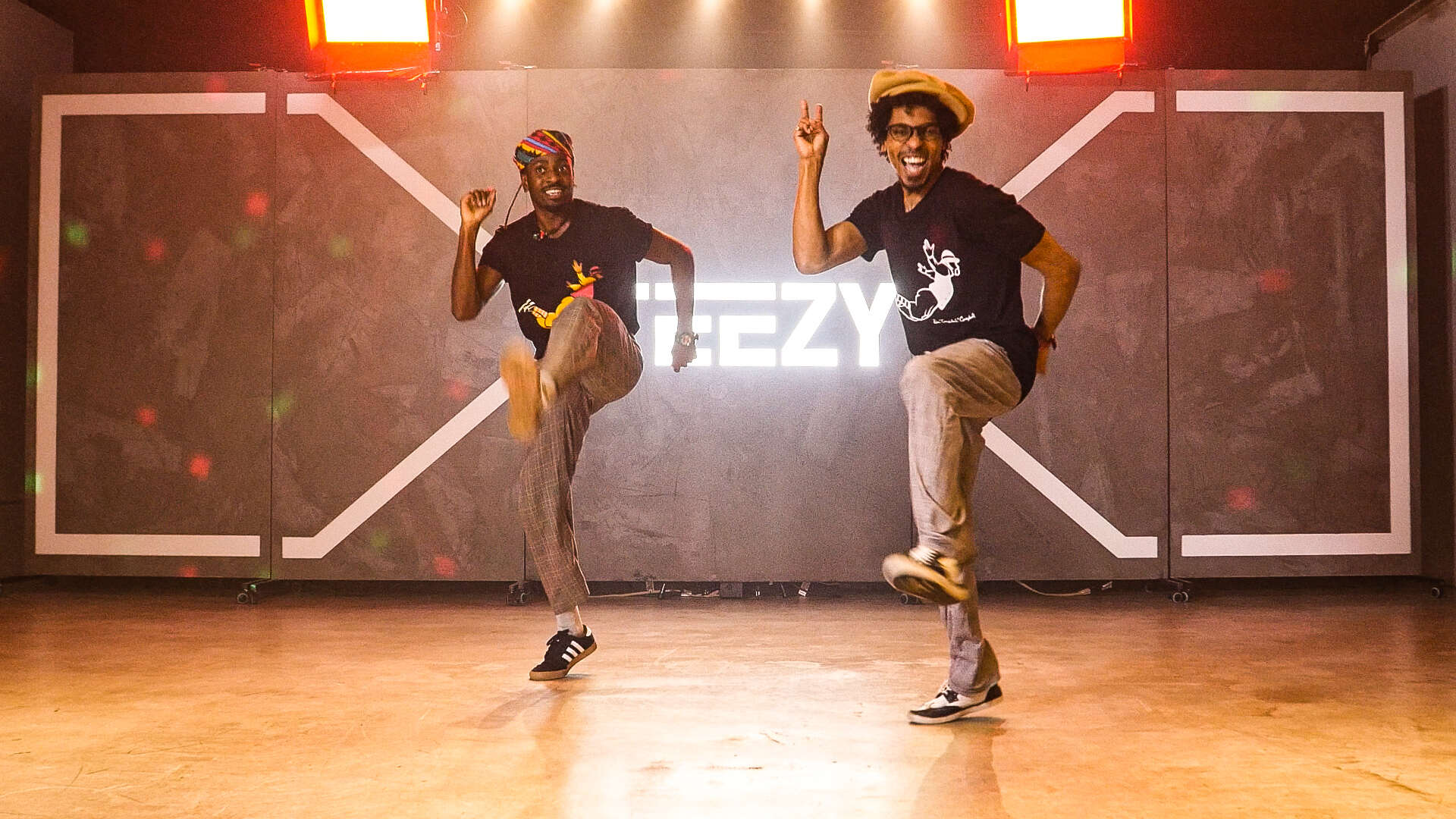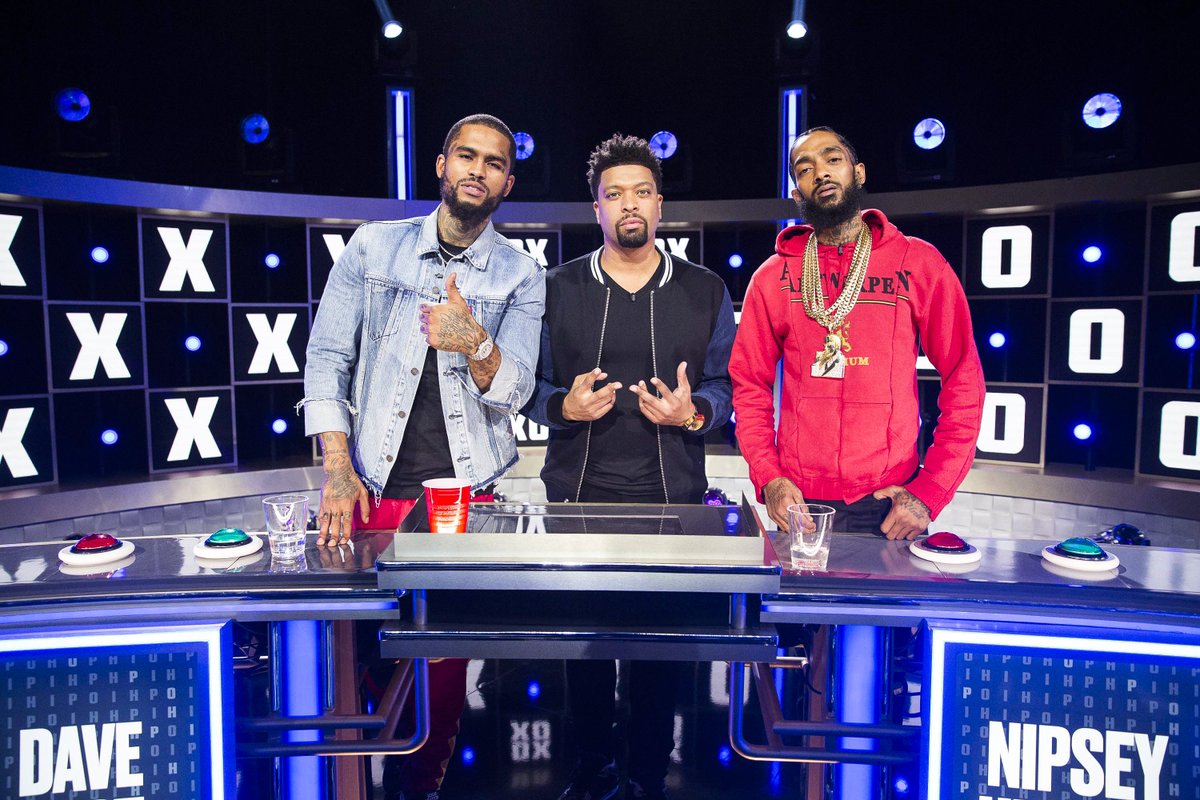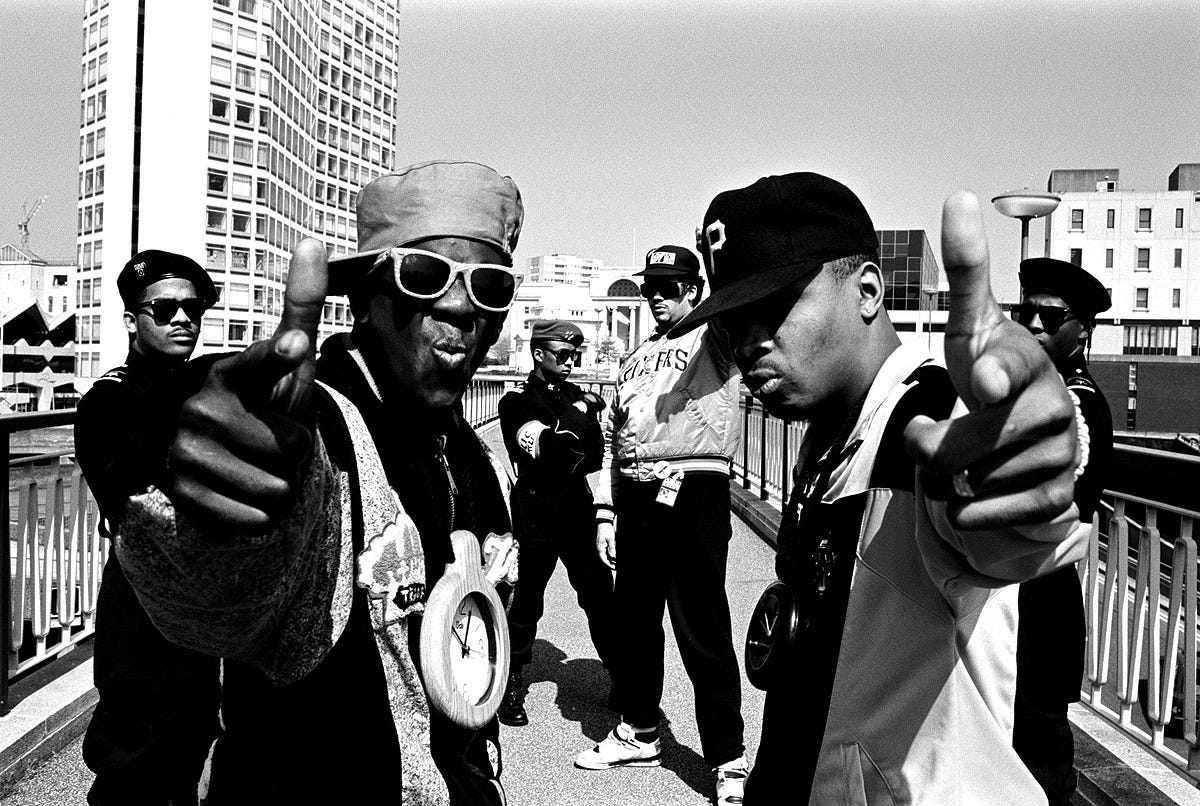Home>Events & Info>Music History>What Is Hip Hop A Music History


Music History
What Is Hip Hop A Music History
Modified: January 22, 2024
Discover the rich music history of hip hop, from its roots to its influence on modern genres. Explore the origins, evolution, and iconic artists that have shaped this vibrant and influential genre.
(Many of the links in this article redirect to a specific reviewed product. Your purchase of these products through affiliate links helps to generate commission for AudioLover.com, at no extra cost. Learn more)
Table of Contents
Introduction
Hip hop music is a genre that has captivated audiences around the world for decades. With its infectious beats, intricate rhymes, and unique storytelling, hip hop has become a cultural phenomenon that extends beyond the realms of music. But what exactly is hip hop, and how did it evolve into the powerful force it is today?
Rooted in African oral traditions, hip hop emerged in the 1970s in the Bronx, New York City. It was born out of the need for self-expression and a platform for marginalized communities to share their stories. Hip hop quickly became a voice for the voiceless, tackling social and political issues with raw honesty and creativity.
The birth of hip hop music is often attributed to DJ Kool Herc, a Jamaican immigrant who brought the tradition of toasting, or rhythmic chanting, to block parties in the Bronx. Herc’s innovative techniques, such as isolating and looping the instrumental breaks of songs, laid the foundation for the genre.
As hip hop gained popularity, it began to spread beyond the Bronx, reaching other neighborhoods in New York City and eventually making its way to the rest of the country. The 1980s marked a significant turning point for hip hop, with the emergence of iconic artists like Run-D.M.C., Grandmaster Flash and the Furious Five, and LL Cool J.
In the 1990s, hip hop achieved mainstream success, with artists like Tupac Shakur, The Notorious B.I.G., and Jay-Z dominating the charts. This era witnessed the commercialization of the genre, as record labels recognized its commercial potential and began investing heavily in hip hop artists.
Today, hip hop music has expanded into a vast landscape of subgenres, each with its own distinct sound and style. From the conscious and socially aware lyrics of Kendrick Lamar to the trap-infused beats of Migos, hip hop continues to evolve and push boundaries.
The influence of hip hop extends far beyond just music. It has become a powerful cultural force, shaping fashion, art, and even language. The genre’s impact can be seen in the rise of streetwear brands, graffiti art, and the adoption of hip hop slang in mainstream culture.
In this article, we will delve into the rich history of hip hop music, exploring its roots, evolution, influential artists, and the social and cultural impact it has had. So join us on this journey as we unravel the fascinating story of hip hop and its enduring legacy.
The Roots of Hip Hop
Hip hop music draws its roots from various cultural and artistic influences, each playing a significant role in shaping its identity. Understanding the roots of hip hop helps us to appreciate the genre’s origins and the cultural context from which it emerged.
One of the key influences on hip hop is the African oral tradition. The rhythmic storytelling, call-and-response patterns, and communal participation found in African music and oral history can be seen as precursors to the rap and spoken word aspects of hip hop. These traditions provided a foundation for the lyrical prowess and poetic expressions that would become integral to hip hop’s identity.
Another important influence on hip hop is the Jamaican sound system culture. Jamaican immigrants brought their music and DJ techniques to the Bronx, New York City, in the 1970s. Sound systems consisted of DJs, MCs (masters of ceremonies), and the use of powerful speaker systems to create a vibrant and interactive atmosphere. The DJ’s role was to select and play records, while the MC would engage the crowd through dynamic verbal exchanges, known as toasting. This immersive experience and interaction with the audience laid the groundwork for the DJ/MC dynamic that became a cornerstone of hip hop culture.
The role of the DJ as a creative and innovative force is another crucial element in the roots of hip hop. In the early days of hip hop, DJs played a significant role in shaping the sound and direction of the genre. They used turntables and mixing techniques to create new sounds, manipulate beats, and isolate instrumental breaks, known as “breakbeats.” These breakbeats were the perfect canvas for MCs to showcase their lyrical skills, leading to the birth of the rap component of hip hop.
Furthermore, the social and economic conditions of the South Bronx in the 1970s played a significant role in the development of hip hop. The neighborhood was plagued by poverty, crime, and neglect, but amidst these challenges, a vibrant artistic scene emerged as an outlet for self-expression. Parties and block events became a platform for DJs, MCs, and dancers to showcase their skills and connect with the community. Hip hop quickly became a means of empowerment, allowing individuals to share their stories, express their frustrations, and celebrate their cultural heritage.
Overall, the roots of hip hop are deeply intertwined with African oral traditions, Jamaican sound system culture, DJ innovation, and the social landscape of the South Bronx. These influences provided the fertile ground for the birth and growth of hip hop, giving rise to a genre that would go on to shape popular culture on a global scale.
The Birth of Hip Hop Music
The birth of hip hop music can be traced back to the vibrant music and cultural scene of the Bronx in the 1970s. It was during this time that various elements converged to give rise to a new genre that would revolutionize the music industry.
One of the key figures in the early days of hip hop music was DJ Kool Herc, a Jamaican immigrant who brought his passion for music and DJing to the Bronx. Herc’s innovative approach to DJing involved isolating and extending instrumental breaks in songs, creating a rhythmic foundation for MCs to rap over. He would seamlessly blend different records using two turntables and a mixer, creating what would later be known as “breakbeats.”
Another pivotal aspect of the birth of hip hop music was the emergence of MCs, or rappers, who would engage in lyrical improvisation and storytelling over the beats provided by DJs. MCs such as Coke La Rock and Grandmaster Caz would grab the microphone and unleash their rhymes, capturing the attention and energy of the crowd.
As MCs and DJs collaborated, block parties and community events became the breeding grounds for this new musical form. It was a space for creative expression and an opportunity for local talent to showcase their skills. These gatherings served as the foundation for the hip hop culture that eventually spread beyond the Bronx and captured the attention of the world.
One of the first hip hop recordings to gain significant recognition was “Rapper’s Delight” by the Sugarhill Gang. Released in 1979, this song brought hip hop to a wider audience, reaching the top charts and introducing the genre to mainstream listeners. The success of “Rapper’s Delight” laid the groundwork for future hip hop artists to pursue recording contracts and paved the way for the commercialization of hip hop.
During this formative period, various other pioneers emerged, each contributing to the growth and development of hip hop. Artists like Afrika Bambaataa, Grandmaster Flash and the Furious Five, and the Crash Crew played crucial roles in molding the genre’s sound and aesthetic. They further innovated DJing techniques, perfected scratching, and introduced socially conscious lyrics, tackling issues such as poverty, police brutality, and social inequality.
Ultimately, the birth of hip hop music was about more than just the beats and rhymes. It was a reflection of the times, an expression of the struggle, resilience, and creativity of the marginalized communities in the Bronx. Hip hop provided a platform for these voices to be heard, and it quickly became a global phenomenon, transcending boundaries of race, class, and geography.
The birth of hip hop music represents a pivotal moment in music history, marking the emergence of a genre that would go on to influence countless artists, shape popular culture, and redefine the possibilities of musical expression.
Evolution of Hip Hop in the 1980s
The 1980s marked a significant period in the evolution of hip hop, as the genre expanded its reach and solidified its place in popular culture. It was during this decade that hip hop transitioned from its grassroots beginnings to a more structured and commercially viable form of music.
One of the notable developments in the 1980s was the emergence of influential hip hop groups and artists who would shape the direction of the genre. Artists like Run-D.M.C., Public Enemy, and LL Cool J gained prominence during this era, pushing the boundaries of hip hop and introducing new styles and sounds.
Run-D.M.C., with their signature blend of rock and rap, brought a fresh energy to the genre. They became known for their distinctive fashion sense, donning Adidas tracksuits and fedoras, and their dynamic collaborations with rock icons like Aerosmith on the hit song “Walk This Way” showcased the crossover potential of hip hop.
Public Enemy, on the other hand, used their music as a platform for activism and social commentary. Their politically charged lyrics and powerful delivery struck a chord with listeners, addressing issues of systemic racism, inequality, and empowerment. Public Enemy’s impact extended beyond music, inspiring a generation of artists to use their platforms to speak out against injustice.
LL Cool J, with his smooth and charismatic persona, brought a more mainstream appeal to hip hop. His romantic ballads and catchy hooks resonated with audiences, making him one of the first hip hop artists to achieve significant commercial success. LL Cool J’s crossover into film and television further solidified hip hop’s place in mainstream entertainment.
In addition to the rise of influential artists, the 1980s also saw advancements in hip hop production techniques. The use of drum machines and samplers allowed producers to create intricate and innovative beats, giving hip hop a distinctive sound. This era witnessed the rise of legendary producers such as Marley Marl, DJ Premier, and Russell Simmons, who played a crucial role in shaping the sonic landscape of hip hop.
Furthermore, the popularity of breakdancing in the 1980s helped to further establish hip hop as a multi-faceted cultural movement. Breakdancing, with its acrobatic moves and expressive dance styles, became a global phenomenon and an integral part of hip hop’s identity. It showcased the athleticism and creativity of individuals in the hip hop community and contributed to the genre’s visual appeal.
The 1980s was a transformative decade for hip hop, as it transitioned from underground parties to mainstream recognition. The influence of artists, the evolution of production techniques, and the growth of other elements such as fashion and dance all played a part in shaping the trajectory of hip hop. It was a decade of experimentation, innovation, and a growing sense of artistic and cultural importance.
Overall, the evolution of hip hop in the 1980s laid the foundation for the genre’s continued growth and influence. The decade showcased the diversity and versatility of hip hop, with artists pushing boundaries, addressing pressing social issues, and solidifying its place as a dominant force in music and popular culture.
Mainstream Success and Commercialization of Hip Hop
The 1990s marked a turning point for hip hop as the genre achieved mainstream success and underwent significant commercialization. During this decade, hip hop not only dominated the charts but also reshaped the music industry and popular culture as a whole.
One of the key factors contributing to the mainstream success of hip hop was the rise of record labels’ recognition of its commercial potential. Major labels started investing heavily in hip hop artists, signing deals and providing resources for marketing and promotion. This shift allowed hip hop artists to gain access to larger audiences and led to an influx of talent into the industry.
Artists such as Tupac Shakur, The Notorious B.I.G., and Jay-Z became household names and achieved unprecedented success during this era. Their unique styles, captivating storytelling, and lyrical prowess captivated audiences. Their albums, such as Tupac’s “All Eyez on Me,” The Notorious B.I.G.’s “Ready to Die,” and Jay-Z’s “Reasonable Doubt,” became iconic and helped shape the sound of 90s hip hop.
Collaborations between hip hop artists and mainstream musicians also played a significant role in the genre’s commercialization. Artists like Puff Daddy (now known as Diddy) pioneered the fusion of hip hop and R&B, creating radio-friendly hits that appealed to a broader audience. This crossover success expanded the visibility and acceptance of hip hop in the mainstream music landscape.
The 90s also witnessed the emergence of influential hip hop labels, such as Death Row Records and Bad Boy Records. These labels not only released groundbreaking albums but also played a crucial role in crafting a distinct visual aesthetic for hip hop artists. From Death Row’s dark and edgy imagery to Bad Boy’s flashy and glamorous style, the visual representation of hip hop became an essential factor in its commercial success.
The incorporation of hip hop into other forms of media also contributed to its commercialization. Hip hop music became a staple in movies, with soundtracks featuring prominently in films like “Boyz n the Hood” and “Juice.” In addition, television shows like “Yo! MTV Raps” helped bring hip hop to a wider audience, showcasing music videos, interviews, and performances from hip hop artists.
Despite the commercial success, hip hop also faced scrutiny and controversy. The genre’s explicit lyrics, glorification of violence, and portrayal of materialism drew criticism and led to debates about its impact on society. Nevertheless, hip hop continued to thrive, adapting and evolving in the face of adversity.
The mainstream success and commercialization of hip hop in the 1990s marked a significant milestone in its history. The genre’s impact extended beyond music, influencing fashion trends, shaping youth culture, and providing a platform for marginalized voices. It was a decade that propelled hip hop into the global spotlight and paved the way for its continued dominance in popular culture.
Subgenres of Hip Hop Music
Hip hop music is a genre known for its diversity and ability to adapt to various musical styles and influences. Over the years, numerous subgenres have emerged, each with its own distinct sound, lyrical themes, and cultural references. These subgenres showcase the evolution of hip hop and highlight the genre’s versatility. Here are some notable subgenres of hip hop:
- Trap: Trap music originated in the southern United States and is characterized by its booming 808 bass, aggressive lyrics, and dark and atmospheric production. Artists like T.I., Young Jeezy, and Gucci Mane are considered pioneers of the trap sound, while artists like Future and Migos have taken it to new heights.
- Conscious Hip Hop: Conscious hip hop focuses on socially and politically aware lyrics, tackling issues such as racism, inequality, and systemic oppression. Artists like Common, Kendrick Lamar, and J. Cole are known for their introspective and intellectually stimulating lyrics.
- Old School Hip Hop: Old school hip hop refers to the early years of hip hop, characterized by its funk and soul samples, simple drum machine beats, and emphasis on party anthems and danceability. Artists like Grandmaster Flash and the Furious Five, Run-D.M.C., and The Sugarhill Gang were prominent figures in the old school era.
- Alternative Hip Hop: Alternative hip hop incorporates a wide range of experimental and non-traditional elements, blurring the boundaries between hip hop and other genres such as rock, electronic, and jazz. Artists like OutKast, A Tribe Called Quest, and Tyler, The Creator are known for their innovative and eclectic approach to hip hop.
- Gangsta Rap: Gangsta rap emerged in the 1980s and is characterized by its gritty and raw portrayal of street life, violence, and crime. Artists like N.W.A., Tupac Shakur, and The Notorious B.I.G. are synonymous with this subgenre, with their lyrics reflecting the harsh realities of inner-city communities.
- Boom Bap: Boom bap is characterized by its heavy drum kicks, snappy snares, and soulful samples. It originated in the 1990s and is associated with artists like Nas, Wu-Tang Clan, and Jay-Z. The boom bap sound is often seen as a nostalgic nod to the golden era of hip hop.
- Grime: Grime originated in the United Kingdom and is characterized by its fast-paced, aggressive flow, and electronic music influences. Artists like Skepta, Stormzy, and Dizzee Rascal are prominent figures in the grime scene, which has gained international recognition in recent years.
These subgenres represent just a fraction of the diverse spectrum within hip hop music. Each subgenre has its own fanbase and contributes to the evolution of the genre as a whole. The ability of hip hop to encompass such diverse styles and themes is a testament to its cultural impact and enduring popularity.
Influential Hip Hop Artists and Groups
Hip hop has been shaped and propelled by countless influential artists and groups throughout its history. These individuals have not only contributed groundbreaking music but have also made significant cultural and social impacts. Here are some of the most influential hip hop artists and groups:
- Run-D.M.C.: Run-D.M.C. is often revered as one of the most influential acts in hip hop. With their pioneering fusion of rock and rap, they brought a new energy and style to the genre. Their collaborations with Aerosmith on “Walk This Way” helped bridge the gap between rock and hip hop, paving the way for future crossover successes.
- Public Enemy: Public Enemy’s politically charged lyrics and powerful delivery made them a dominant force in the 1980s and early 1990s. Their album “It Takes a Nation of Millions to Hold Us Back” is considered one of the most influential albums in hip hop history, addressing issues of racism, social injustice, and empowerment.
- Tupac Shakur: Tupac Shakur is celebrated as one of the most iconic and influential figures in hip hop. Known for his introspective lyrics, passionate delivery, and poetic storytelling, Tupac’s impact extends far beyond his tragic death. His albums, such as “Me Against the World” and “All Eyez on Me,” continue to resonate with audiences and inspire new generations of artists.
- The Notorious B.I.G.: The Notorious B.I.G., also known as Biggie Smalls, was a lyrical genius and a master storyteller. With his smooth flow, vivid imagery, and impeccable storytelling ability, Biggie rose to become one of the greatest rappers of all time. His album “Ready to Die” is considered a classic, exemplifying his unparalleled talent.
- N.W.A.: N.W.A. (Niggaz Wit Attitudes) pushed boundaries and sparked controversy with their raw and unapologetic portrayal of street life. Their debut album “Straight Outta Compton” is a landmark in gangsta rap, addressing issues of police brutality, racial discrimination, and inner-city struggles. N.W.A. laid the foundation for West Coast hip hop and influenced a generation of artists.
- OutKast: OutKast, comprised of André 3000 and Big Boi, brought southern hip hop to the forefront with their unique blend of funk, soul, and rap. Their album “Speakerboxxx/The Love Below” broke barriers and expanded the possibilities of hip hop, showcasing their versatility and creativity.
- Jay-Z: Jay-Z is undeniably one of the most successful and influential hip hop artists of all time. With his business acumen, lyrical prowess, and cultural impact, Jay-Z has become a trailblazer in the industry. His albums, such as “The Blueprint” and “Reasonable Doubt,” solidified his iconic status.
These artists and groups represent a fraction of the numerous influential figures in hip hop. Each has left an indelible mark on the genre, shaping its sound, pushing boundaries, and inspiring generations of artists to come. Their impact extends beyond music, influencing fashion, language, and popular culture as a whole.
Social and Cultural Impact of Hip Hop
Hip hop music has had a profound social and cultural impact since its inception. From its roots as a form of self-expression for marginalized communities to its global influence, hip hop has shaped popular culture and sparked important conversations about race, equality, and identity.
One of the significant ways in which hip hop has made a social impact is by providing a platform for marginalized voices and communities. In its early days, hip hop allowed individuals from disadvantaged backgrounds to share their personal stories and address issues of social inequality. It gave a voice to those who were often marginalized and underrepresented in mainstream media.
Hip hop’s influence extends beyond music. It has impacted fashion, language, and dance. Hip hop fashion, characterized by baggy clothes, sneakers, and accessories like chains and hats, has become a prominent style around the world. The culture’s unique slang and expressions have infiltrated mainstream language, shaping the way people communicate. Even dance styles like breakdancing have gained recognition and popularity, spreading the hip hop influence internationally.
Furthermore, hip hop has challenged societal norms and given a space for artists to express their individuality and creativity. It has encouraged artists to explore diverse styles and experiment with different musical elements, breaking down barriers and defying genre boundaries. This sense of artistic freedom in hip hop has inspired other genres and opened doors for more cross-genre collaborations.
Hip hop has also served as a platform for activism and social commentary. Many hip hop artists have used their music to address systemic issues such as racism, police brutality, poverty, and political corruption. Through their lyrics, hip hop artists have sparked important conversations and raised awareness of social injustices, encouraging their listeners to take action and seek positive change.
Moreover, hip hop has played a crucial role in shaping the perception and understanding of Black culture. It has celebrated Black achievements, highlighted the struggle against oppression, and empowered Black communities. Hip hop’s influence on culture has helped to break down stereotypes and challenge negative perceptions, fostering a sense of pride and unity.
However, it is important to acknowledge that hip hop has faced criticism for some aspects, such as the objectification of women and the glorification of materialism and violence. These criticisms highlight the complex nature of hip hop and the ongoing debates surrounding its impact on society.
Overall, the social and cultural impact of hip hop cannot be underestimated. It has provided a voice for the voiceless, influenced fashion and language, challenged societal norms, sparked conversations, and empowered communities. As hip hop continues to evolve, its ability to shape and reflect society will remain a powerful force in popular culture.
Contemporary Trends in Hip Hop Music
Hip hop music continues to evolve and adapt to the changing musical landscape, reflecting the creative vision and influence of new generations of artists. As we delve into the present, we can identify several contemporary trends in hip hop that are shaping the sound and direction of the genre.
One of the prominent trends in modern hip hop is the fusion of genres. Artists are increasingly incorporating elements from different musical styles, such as R&B, pop, rock, electronic, and even reggae, creating a diverse sonic palette. This fusion allows for experimentation and appeals to broader audiences who appreciate a blend of sounds and influences. Artists like Drake, who seamlessly incorporate singing and rapping, exemplify this trend.
Another significant trend is the rise of trap music. Originating in the southern United States, trap is characterized by its heavy 808 bass, rapid hi-hats, and dark and atmospheric production. It has gained immense popularity and influence, not only in hip hop but also in mainstream music. Artists like Travis Scott, Migos, and Future have propelled trap into the spotlight, captivating listeners with their infectious beats and catchy hooks.
Furthermore, the internet has played a crucial role in shaping contemporary hip hop. The digital era has allowed for independent artists to gain significant recognition and build large followings without traditional record label support. Platforms like SoundCloud and YouTube provide opportunities for artists to share their music directly with fans, bypassing traditional industry gatekeepers. This democratization of distribution has led to a wider range of voices and styles being heard within the hip hop landscape.
Lyrically, the content and themes explored in hip hop have also expanded. While the genre still delves into personal experiences, storytelling, and social issues, there is a newfound openness in discussing mental health, vulnerability, and personal growth. Artists like Kendrick Lamar, J. Cole, and Chance the Rapper have been praised for their introspective and introspective approach to their craft, giving voice to emotions and experiences that were previously considered taboo in hip hop.
Moreover, social media has become an integral part of hip hop culture. Artists leverage platforms like Instagram, Twitter, and TikTok to engage with fans, promote their music, and create viral moments. Social media has become a tool for building personal brands, connecting with fans on a more intimate level, and cultivating a dedicated following.
Lastly, collaboration has become a prevalent aspect of contemporary hip hop. Artists frequently team up, not only with other hip hop artists but also with musicians from different genres. These collaborations transcend boundaries, creating exciting and unexpected musical combinations. Examples include Kendrick Lamar’s collaborations with rock band Imagine Dragons and Travis Scott’s joint projects with artists like Kid Cudi and Rosalía.
As hip hop continues to adapt and evolve, these contemporary trends shape its landscape and contribute to its ongoing popularity and influence. The fusion of genres, the rise of trap music, the impact of the internet, the exploration of new lyrical themes, the significance of social media, and the spirit of collaboration all mark the current direction of hip hop. It remains an ever-evolving genre, constantly pushing boundaries and redefining the possibilities of musical expression.
Conclusion
Hip hop music is more than just a genre; it is a powerful cultural force that has transformed the music industry and resonated with audiences around the world. From its humble beginnings in the Bronx to its current global dominance, hip hop has continuously evolved, adapting to new musical trends, and reflecting the social and cultural contexts of its time.
The roots of hip hop can be traced back to African oral traditions, Jamaican sound system culture, and the social landscape of marginalized communities. It gave a voice to the voiceless, addressing social and political issues with creativity and raw honesty. Hip hop’s birth marked the beginning of a movement that would revolutionize music and popular culture.
The evolution of hip hop in the 1980s brought mainstream success and commercialization, with influential artists like Run-D.M.C., Public Enemy, and LL Cool J leading the way. Hip hop became a global phenomenon, influencing fashion trends, language, and dance styles.
Subgenres of hip hop, such as trap, conscious hip hop, and boom bap, emerged, showcasing the genre’s versatility and providing artists with avenues for artistic expression. Revolutionary artists and groups like N.W.A., Tupac Shakur, and OutKast pushed boundaries and addressed important social issues, sparking conversations and inspiring change.
Hip hop’s social and cultural impact cannot be overstated. It has provided a platform for marginalized voices, challenged societal norms, and celebrated Black culture. It has influenced fashion, language, and popular culture as a whole, leaving an indelible mark on society.
Contemporary trends in hip hop, such as genre fusion, trap music, the internet’s influence, and the exploration of personal and emotional themes, continue to shape the genre’s sound and identity. The power of social media and collaboration further propel hip hop to new heights, connecting artists with fans and creating exciting musical experiences.
In conclusion, hip hop music is a dynamic and ever-evolving genre that has transcended cultural boundaries and become a significant force in global music. Its roots, evolution, influential artists, and social impact have made it a powerful form of self-expression and a reflection of the times. Hip hop’s journey continues, and its ability to innovate, inspire, and ignite important conversations ensures its enduring legacy in the music industry and beyond.


